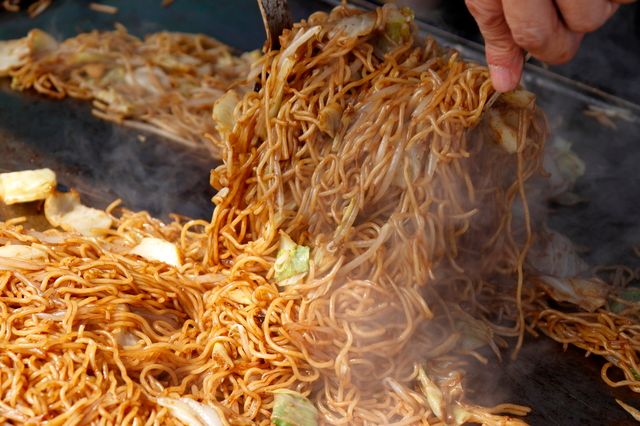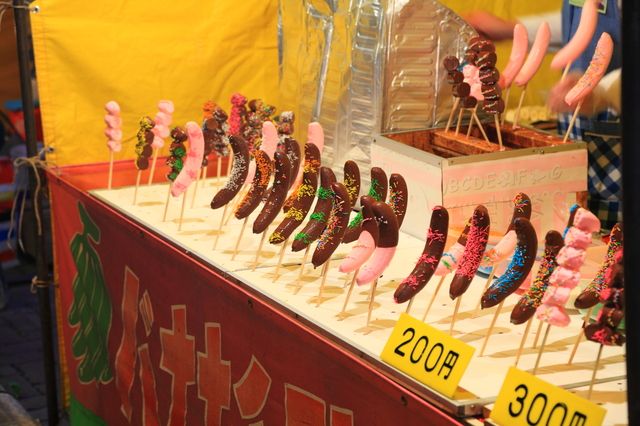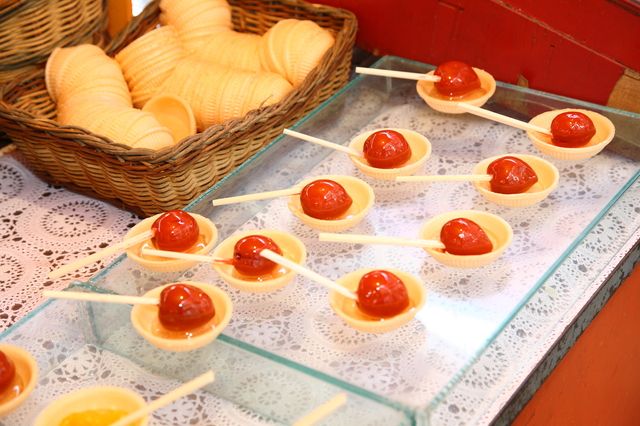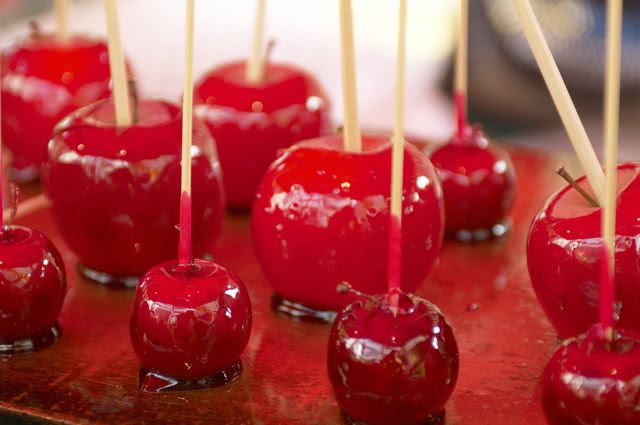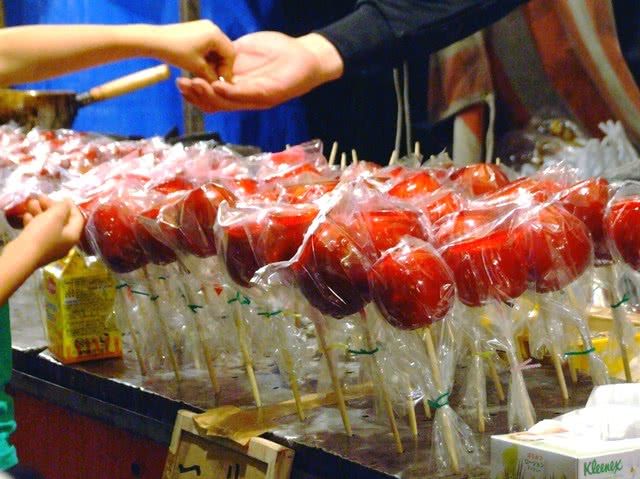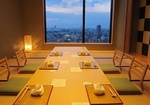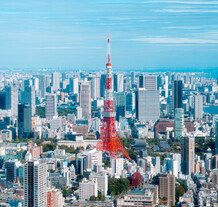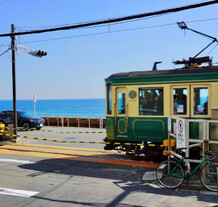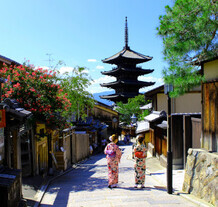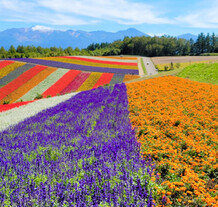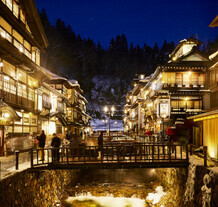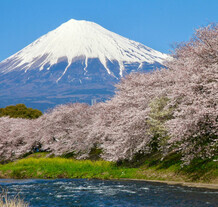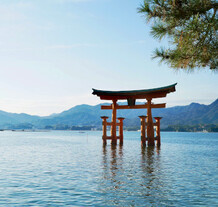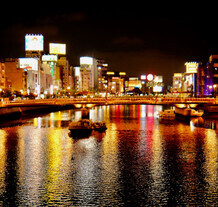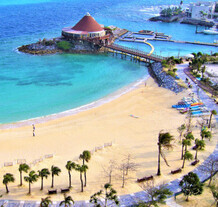Summers in Japan are represented by the fireworks and Bon Odori dancing of summer festivals. In fact, the largest fireworks festival in Tokyo is attended by over 1,000,000 people! The food stands set up around the event venue play an important, indispensable role in these lively Japanese summer festivals. From sweet snacks to savory foods that can constitute a meal, a large variety of different stands line the streets. You'll find yourself wanting to buy something from each stand as you look around at all of them! This article will introduce must-try items from Japanese food stands. Be sure to try them when you visit the many festivals around Japan!
1. Chocolate Banana
Chocolate bananas are extremely popular with children. It's a sweet and satisfying snack that is made with an entire banana, which is completely coated in chocolate and topped with colorful sprinkles. Sometimes, depending on the stand, the bananas are coated in a pink, blue, or green colored chocolate. Each banana is served on a chopstick and is made using chocolate that won't melt easily, so it's perfect for eating on the go! They are often priced at around 300 JPY. You'll definitely want to try this one the next time you're at a summer festival.
2. Yakisoba
The classic festival dish yakisoba (fried noodles) is popular with both children and adults, and is an absolute must at summer festivals. Ingredients such as cabbage and pork are fried on a large iron griddle, then combined together with noodles that are fried separately. A thick sauce is then added to mix it all together for a tasty dish. The yakisoba, which is generously piled in a container to the point that it looks like it'll burst open, is topped with red pickled ginger and dried seaweed flakes in a classic food stand style. It's such a popular festival food that many recipes attempting to reproduce the taste of food stand yakisoba at home can be found circulating around.
3. Takoyaki
設定
![3. Takoyaki]()
Takoyaki is another classic festival food that boasts as much popularity as yakisoba. Inside the piping hot flour-based batter is a bite-sized piece of octopus. The batter is poured into a special takoyaki-making device with numerous semispherical hollows in it, and the octopus is added in right after. A pick is used to stick into the side of the hollows several times to check that the surface is cooked. It is then flipped over with the same pick to reveal a beautiful round takoyaki. You'll be able to see the entire process right in front of your very eyes at a food stand! One order usually comes with 6-8 pieces, so it's great for sharing with family or friends. Topped generously with takoyaki sauce, mayonnaise, bonito flakes, and dried seaweed flakes, takoyaki goes together perfectly with a glass of beer!
4. Anzu Ame
設定
![4. Anzu Ame]()
Anzu ame (apricot candy) is a classic sweet that is often seen at festivals in Eastern Japan. It's a snack in which fruit is skewered with a chopstick, covered with mizuame (starch syrup), then cooled over ice. Although it's called "apricot candy," it's more often the case that pickled Japanese plum is used. Nowadays, you'll see some made with other fruits like mandarin oranges, pineapples, and strawberries as well. The candy melts easily, so it's commonly eaten on top of a piece of monaka (Japanese sweet made by baking thinly spread rice flour. Often filled with sweet red bean paste).
5. Okonomiyaki
There are 2 types of okonomiyaki (Japanese savory pancake): Kansai-style and Hiroshima-style. Kansai-style is made by mixing ingredients like thinly sliced cabbage and pork into the batter, then grilling it like a pancake. Sometimes ground Japanese yam is added to the batter to give it a fluffy texture. With Hiroshima-style, on the other hand, the ingredients are not mixed into the batter. The batter is fried on its own first, and the toppings are lined up on top of it, then flipped over. After that, it is placed on top of separately fried noodles, and a fried egg is added on top. They are both topped with sauce, mayonnaise, bonito flakes, and dried seaweed flakes to finish it off, and you'll be able to savor its rich, savory flavors!
6. Ringo Ame
Ringo ame (apple candy) is a sweet made by coating fresh apples in syrup. It's a popular sweet that is made not only in Japan, but also in other countries at events like harvest festivals and Halloween. It's made using a whole apple, so it's really filling! In Japan, there are also variations with other fruits such as strawberries and grapes. At first glance, ringo ame may look like anzu ame, but the syrup used to coat the fruits is different, and they are actually not alike at all!
7. Cotton Candy
設定
![7. Cotton Candy]()
Cotton candy is a sweet made by wrapping a cotton-like candy that comes out of a special machine around a chopstick. In addition to the fluffy and foamy cloud-like texture, the colorful appearance, which comes in various colors like white, pink, and blue, is very popular with kids! There are times when it is so large in size that it's bigger than a child's face! You can enjoy the light texture of the cotton candy, which melts away the instant you put it in your mouth. There are some food stands where you can make it yourself, and somewhere you can purchase a puffy bag filled with cotton candy that the staff made beforehand. The cotton candy bags with popular characters displayed on them are also quite popular.
8. Frankfurter
A Frankfurter is a large sausage packed with pork intestines and minced meat that is skewered and fried on a large iron griddle. It's crispy on the outside and juicy on the inside, and it's incredibly satisfying! They are usually sold with one sausage per order, but you can order several and enjoy them with your choice of ketchup or whole-grain mustard! They are perfect for eating on the go since they come skewered, and are extremely popular with people of all ages!
9. Chicken Karaage
Karaage, made by deep frying chicken dipped in flour, is a summer festival staple that is popular with everyone, from kids to adults. The crispy texture and juicy umami (Japanese savory taste) typical of food stand fried chicken is very enjoyable. Generally, 4-5 pieces are sold in a paper cup, so it's great for sharing! It's recommended for adults to enjoy these delicacies with beer!
10. Shaved Ice
When it comes to summertime favorites, shaved ice is definitely on the top of the list! It is an extremely popular dessert that includes finely shaved ice topped with syrup. There are many different flavors of syrup, such as Hawaiian punch, strawberry, lemon, and melon. At food stands, you can put as much syrup as you want, and you can even mix it up by adding several kinds of syrups! One of the best parts of shaved ice is that you can mix different flavors together, like strawberry and milk or matcha (powdered green tea) and sweet red bean paste. Why not buy a few with your friends and compare the different flavors? Look for the Japanese word for ice (氷) to find a shaved ice stand!
This article introduced 10 of the most popular foods from food stands in summer festivals! Many food stands line the roads offering a wide variety of filling foods like yakisoba and takoyaki, as well as sweets like cotton candy and shaved ice. Have fun looking for a food stand you're interesting in trying during your next visit to a Japanese festival!
Disclaimer: All information is accurate at time of publication.
